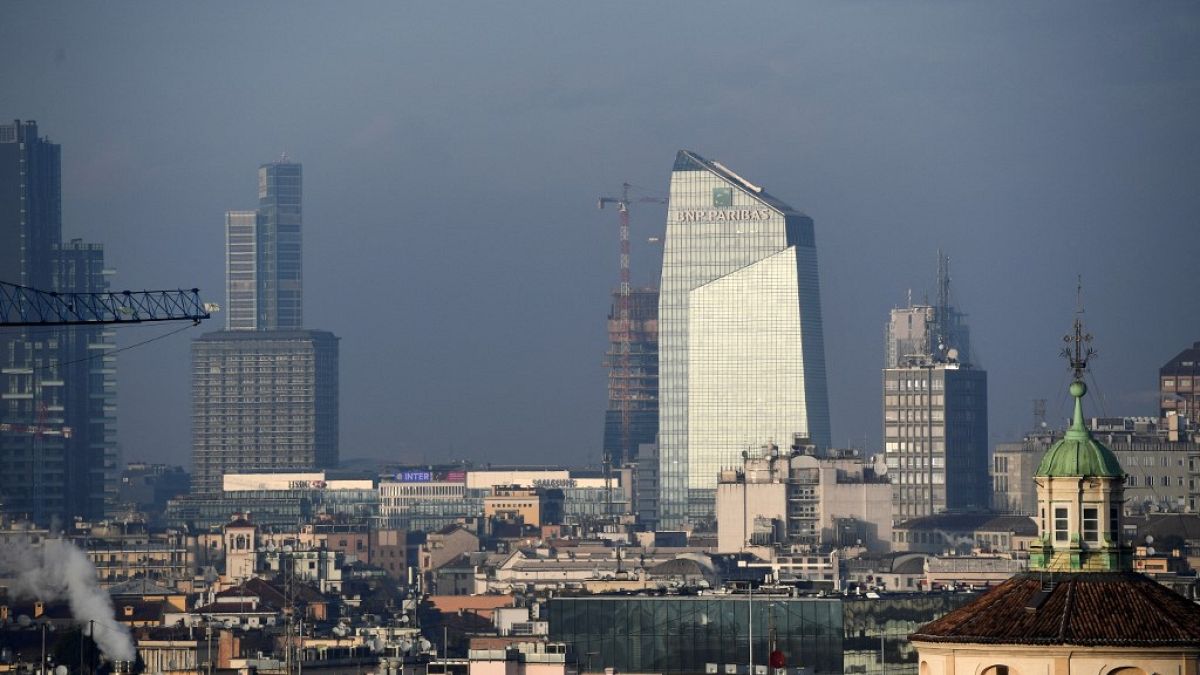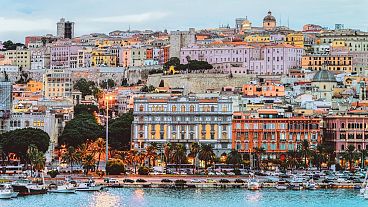Italy's recovery fund is in focus as it works towards meeting EU targets. Euronews Business looks at the challenges ahead for the country as it faces uncertainties but also opportunities and potential for growth.
Italy's advancement under the National Recovery and Resilience Plan (PNRR) are currently under close observation by the European Commission.
According to European sources familiar with the matter, it was recently reported that Rome is facing increased difficulties in meeting the European Commission's requirements for tranche disbursements, as the speed of the requisite reforms decelerates.
The slowdown in question has become a matter of great concern for Italy’s Prime Minister Giorgia Meloni, as it raises the possibility of potential setbacks in the crucial recovery process.
The Fourth Tranche: A critical juncture
Italy is on the verge of a significant financial boost as it prepares to receive its fourth installment of the PNRR. This eagerly anticipated installment is valued at €16.5 billion, which is set to provide a much-needed injection of funds into the country's economy.
Yet, there is increasing anxiety regarding the potential obstacles that may impede the achievement of the 28 project targets associated with this particular tranche.
The European Recovery and Resilience Facility (RRF), which forms the cornerstone of the NextGenerationEU initiative, stipulates that Italy must effectively implement the investments and reforms outlined in its recovery plan in order to receive performance-based payments.
Financial overview: Grants, loans and GDP impact
Italy's overall recovery plan, comprising €69 billion in grants and €122.6 billion in loans, represents a significant portion of the country's GDP (10.79%).
The fourth tranche's arrival would bring total disbursed funds to approximately €101.9 billion, which is about 52% of the total available funds.
The overall package is pivotal for Italy's economic revival and fortitude in the forthcoming years and stands as a primary element under scrutiny by credit rating agencies when evaluating the nation's creditworthiness.
Milestones and targets: A daunting task ahead
Italy faces a daunting task of meeting 377 investment-related and 150 reform-related milestones and targets.
According to the latest report from the European Commission, a staggering 72% of these commitments have yet to be met.
Italy's ambitious plans to revamp its public administration, strengthen its production systems, and tackle socio-economic challenges may face a potential barrier due to a lack of fulfillment.
Paolo Gentiloni, the European Commissioner for Economy, has offered advice to Prime Minister Meloni on navigating challenging circumstances, emphasising a singular imperative: reforms.
“It is essential that governments pursue the reforms and investments necessary to improve our competitiveness and achieve sustained and sustainable growth,” Gentiloni said.
Digitalisation: A key pillar for Italy's future
One of the cardinal objectives of Italy's PNRR is the enhancement of the country's digital infrastructure, especially within its public administration.
The Italian bureaucracy, historically known for its complexity, has long obstructed business efficacy and economic growth. Despite marked advancements in the Digital Economy and Society Index (DESI) in recent years, Italy remains below the European average, ranking 18th among the 27 European Union member states.
Italy has so far received $6.4 billion in grants and loans for digital transformation, part of a total allocation of €49 billion for completing the pillar’s overhaul.
Moody's credit rating: A ray of hope
In a positive development, Moody's credit rating agency reaffirmed Italy's credit rating at Baa3 on November 17, upgrading the outlook to "stable" from "negative."
This change reflects a stabilisation in the country's economic strength, banking sector health, and debt dynamics. Italy's significant economic strengths, including its robust manufacturing sector, high household wealth, and the private sector's low indebtedness, support this rating.
The credit rating agency has highlighted the positive impact of Italy's PNRR on the country's medium-term economic outlook, emphasising that the successful execution of the plan is expected to strengthen Italy's economic prospects in the coming years.
PNRR is crucial for Italy’s economic growth
The latest European Commission macroeconomic forecasts suggest that Italy's real GDP, which likely bottomed out in the third quarter, is expected to rebound in the final quarter of 2023.
This recovery is forecasted to lead to annual growth of 0.7%, accelerating to 0.9% in 2024 and 1.2% in 2025. This growth trajectory is primarily driven by investments funded through the RRF.
The road ahead is paved with challenges and uncertainties, but it is also filled with opportunities and potential for growth. For Italy, the PNRR represents a golden opportunity for development, investments, and reforms as well as a defining moment on the European stage.



